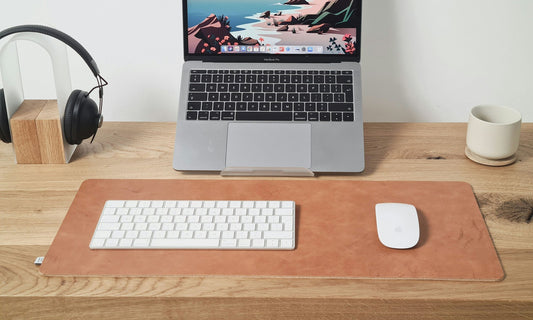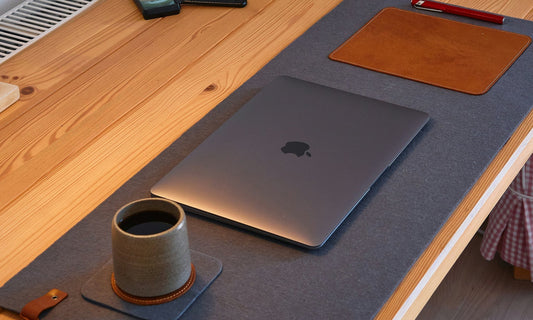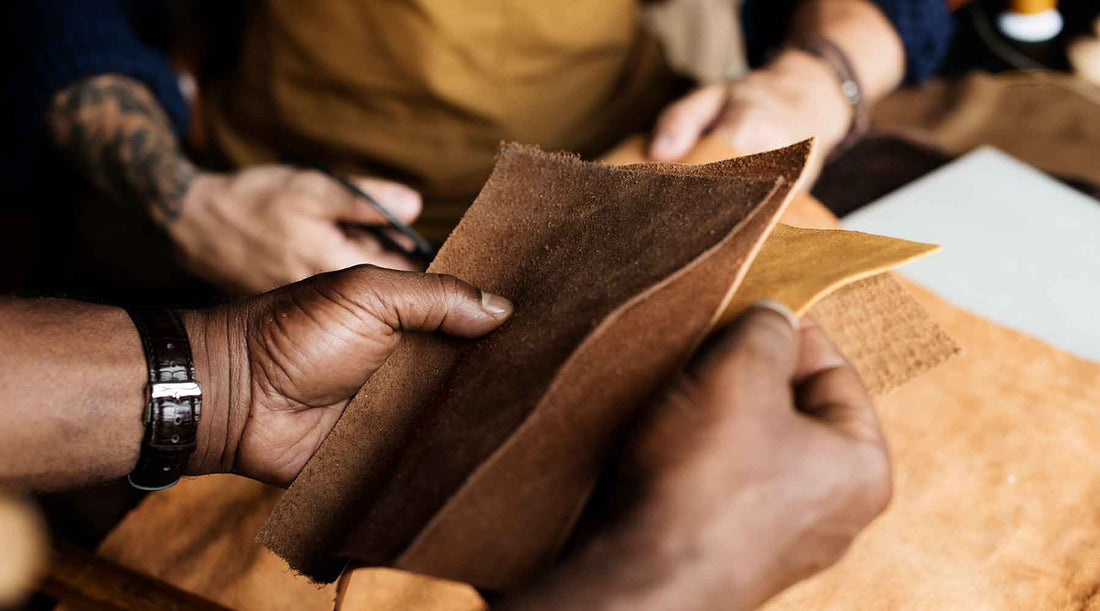
What leather shows the best patina?
Oscar Arenas
Introduction
Understanding Patina
Types of Leather and Their Patina Potential
- Full Grain Leather
- Top Grain Leather
- Suede and Nubuck
- Exotic Leathers
Caring for Leather to Develop a Beautiful Patina
Case Studies: Examples of Leather Items with Beautiful Patina
Conclusion
Leather, with its rich texture and inherent durability, has been a cornerstone in the realm of materials for centuries. Its unique ability to age gracefully, developing a patina over time, only adds to its allure. Patina, the sheen that appears on the surface of the leather as it ages, is not just a sign of wear; it's a badge of honor, telling the story of the item and its journey with its owner.
The patina development transforms leather goods from mere objects into treasured possessions, each with its narrative. This blog delves into the world of leather and its patina, exploring what types best showcase this desirable feature. Whether you're a seasoned collector or a curious newcomer, understanding how patina forms and which leather types best exemplify its beauty can enhance your appreciation of leather goods and help you make informed purchase decisions.

Understanding Patina
Patina is the result of the natural aging process, a testament to the life and times of a leather item. It is characterized by a soft sheen and a smooth surface, often developing a more prosperous, deeper color. This phenomenon occurs as oils from the skin, sunlight, and regular use accumulate on the leather, causing it to darken and develop a personality of its own.
Several factors influence patina formation, including the type of leather, the conditions it's exposed to, and how it's cared for. Not all leather is created equal in this regard; some are more predisposed to developing a rich patina than others. The following sections will explore various leather types and their potential for patina, offering insights into how you can select and care for leather goods to achieve that coveted aged look.
Types of Leather and Their Patina Potential
Leather is not just a single material but a category encompassing various types, each with distinct characteristics, textures, and patina potential. Understanding these differences is critical to appreciating how leather ages and which types are best suited for those seeking a beautiful patina over time.
Full Grain Leather
Full-grain leather stands at the pinnacle of leather quality. It includes the entire grain layer without any removal of the surface. This type of leather is not sanded or buffed to remove imperfections, meaning it displays the proper texture and markings of the animal's skin.
Characteristics and Durability
Full-grain leather is the most durable and resilient type of leather. It retains the natural fibers and markings of the hide, offering a unique character that becomes more pronounced with age. Its strength and natural breathability make it resistant to wear and to withstand years of use while developing a rich, distinctive patina.
How It Develops Patina
The patina on full-grain leather is a direct reflection of its life experiences. Exposure to natural elements like sunlight and oil from human skin enhances its beauty, creating a lustrous sheen that is unique to each piece. This gradual patina development varies based on how the leather is used and cared for, making each full-grain item a one-of-a-kind masterpiece.
Examples of Products
High-quality leather bags, premium footwear, and luxury leather goods often feature full-grain leather. These items are sought after for their appearance and how they age over time, with each crease and mark telling a story.
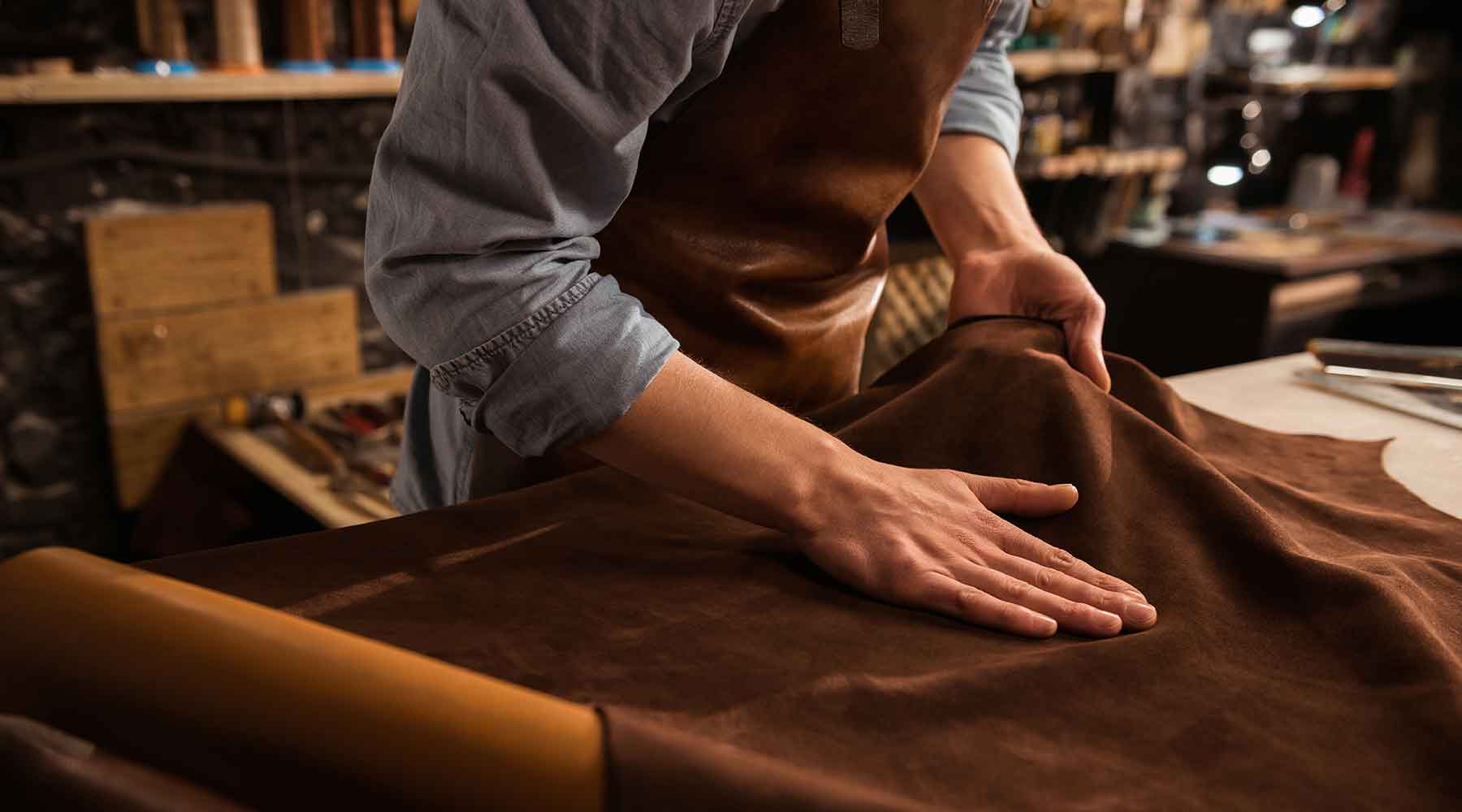
Top Grain Leather
Top grain leather is another high-quality leather, though it undergoes slight processing. The hide's top layer is sanded to remove imperfections, creating a more uniform appearance but slightly reducing durability compared to full-grain leather.
Characteristics
Top-grain leather is softer and more pliable than full-grain, making it easier to work with for different products. It still maintains a high level of durability and can develop a patina, though it may be less pronounced than with full-grain leather.
Patina Development Potential
While top-grain leather does develop a patina, the process is more subtle. The surface treatments applied to top-grain leather can slow the patination process, resulting in a more gradual change. However, top-grain leather goods can achieve a beautiful and unique patina with proper care and regular use.
Products That Highlight Patina
Top-grain leather is commonly used in high-end furniture, jackets, and accessories. Over time, these items can exhibit a gentle glow and softness that speaks to their quality and the care they've received..
Suede and Nubuck
Suede and nubuck are softer, more textured leathers made from the underside of the hide or by sanding down the outer layer of the leather, respectively.
Defining Characteristics
These leathers are prized for their soft, velvety texture. They are less durable than full or top-grain leathers and require more maintenance to keep them looking good.
Challenges in Developing a Traditional Patina
Suede and nubuck do not develop a patina in the same way as complete or top-grain leathers. Instead of creating a sheen, they may become smoother and slightly darker in areas of frequent use. The 'patina' of suede and nubuck is more about a gentle evolution of texture and color than the glossy finish in other leathers.
Tips for Care and Maintenance
Regular brushing and protective sprays can help maintain the appearance of suede and nubuck, protecting them from stains and water damage. While they may not develop a traditional patina, with careful maintenance, they can age gracefully and maintain their beauty over time.
Exotic Leathers
Exotic leathers, such as crocodile, ostrich, and snake, offer unique patterns and textures not found in traditional leathers. Each type of exotic leather has its own set of characteristics and patina potential.ial.
Types and Unique Patina Characteristics
Exotic leathers can develop a patina that highlights their unique textures and patterns. For example, crocodile leather may develop a more pronounced shine along its scales, enhancing its luxurious appearance.
Special Considerations for Care and Maintenance
Exotic leathers require specialized care to maintain their appearance and ensure their longevity. Using products specifically designed for exotic leathers is crucial to prevent damage and preserve their unique qualities.
The patina's development is a beautiful testament to the natural aging process of leather, with each type offering its unique journey. Whether you prefer the rugged elegance of full-grain leather, the smooth sophistication of top grain, the soft allure of suede and nubuck, or the distinctive charm of exotic leathers, understanding how to care for and appreciate each type's patina potential can enhance your experience and enjoyment of leather goods.
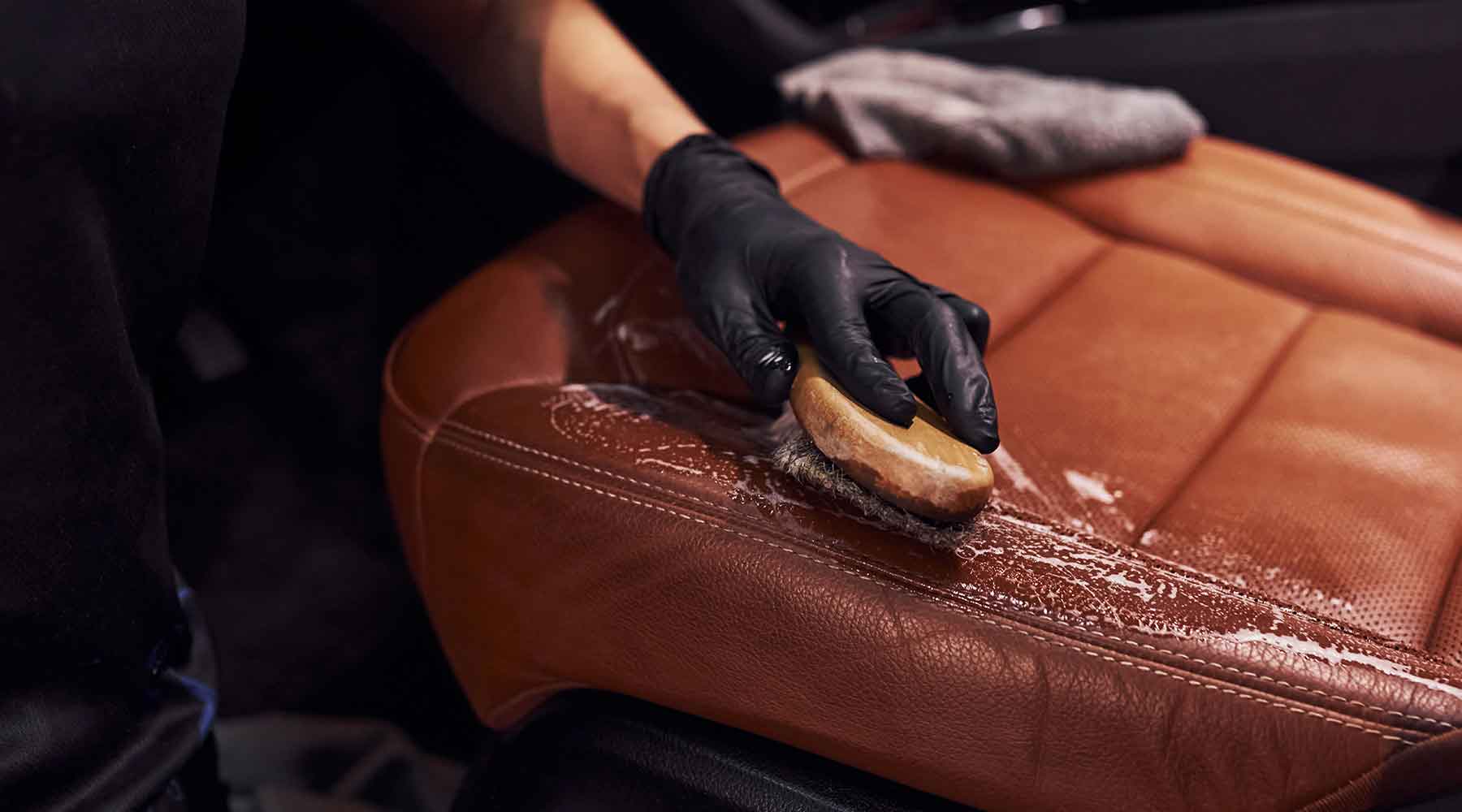
Caring for Leather to Develop a Beautiful Patina
Proper care and maintenance are pivotal in nurturing a patina that tells a story and enhances the beauty and longevity of leather goods. Developing a rich, desirable patina is a gradual process that requires attention and patience. Here, we'll explore critical strategies for caring for your leather items to encourage a beautiful patina while maintaining their integrity and appeal.
Regular Maintenance Tips
- Clean Gently But Regularly: Regular cleaning is crucial to remove dirt and oils that can accumulate on the leather's surface. Use a soft, damp cloth to wipe your leather items gently. For deeper cleaning, use a cleaner specifically designed for leather. Avoid harsh detergents that can strip natural oils from the leather, leading to dryness and cracking.
- Conditioning: Conditioning leather is akin to moisturizing skin; it replenishes natural oils, keeping the leather supple and preventing it from drying out and cracking. Use a quality leather conditioner every few months or more frequently for items used daily. Apply a small amount with a soft cloth, working it into the leather in circular motions.
- Proper Storage: When not used, store leather goods in a cool, dry place away from direct sunlight or heat sources. Excessive heat or humidity can cause the leather to warp or mold, while sunlight can fade and dry out leather, altering its patina process.
- Avoid Overexposure to Water: While some exposure to elements is beneficial for developing patina, excessive water can damage leather. If your leather item gets wet, let it air dry naturally away from heat sources. Stuffing shoes or bags with paper can help maintain their shape as they dry.
Accelerating Patina on Purpose
For those eager to see their leather age more quickly, there are ways to accelerate the patina process, though these methods should be used judiciously to avoid damaging the leather.
- Frequent Use: Simply using your leather goods is one of the best ways to develop a patina. The natural oils from your skin, combined with the friction and flexing of the material, contribute to the development of a unique sheen and coloration.
- Sun Exposure: Occasional, controlled exposure to sunlight can help darken the leather and speed up the patina process. However, too much sun can lead to fading and dryness, so moderation is key.
- Oiling: Applying a small amount of natural oils, like neatsfoot or mink oil, can darken the leather and contribute to its aging process. Be aware that this can also alter the feel and initial appearance of the leather, so it's best used on items where a rugged, aged look is desired.
Case Studies: Examples of Leather Items with Beautiful Patina
The journey of a leather item from its pristine condition to a well-aged piece adorned with a unique patina is a story worth telling. This section explores a few case studies that exemplify how a patina can transform leather goods, imbuing them with character, beauty, and history.
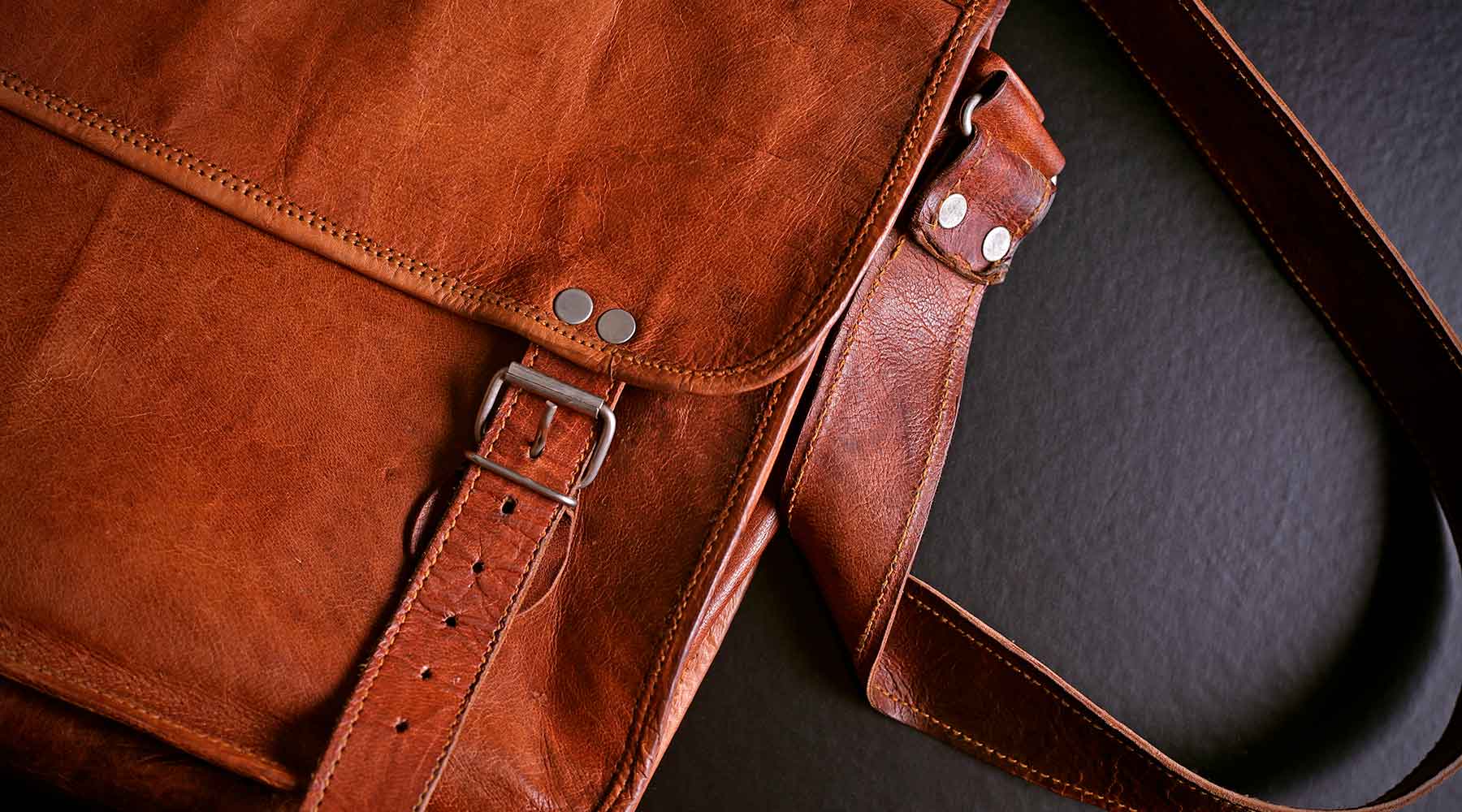
Vintage Leather Briefcase: A Testament to Time
One of the most compelling stories of patina development comes from a vintage leather briefcase passed down from a grandfather to his grandson. This briefcase was purchased in the late 1960s and made from high-quality full-grain leather. Over decades of daily use, the suitcase was exposed to the rigors of a daily commute, the spill of morning coffee, and the caress of countless documents being stored and retrieved.
- Before: The briefcase started its journey with a dark brown hue, smooth to the touch, and somewhat stiff in its construction.
- After: Fifty years later, the briefcase boasts a rich, dark patina, with areas of wear where the natural movements of handling have softened the leather. The corners, once sharp and defined, now tell the tale of years of setting down and picking up, smoothed by time and use.
This briefcase is not just a tool for carrying documents; it's a legacy, carrying stories of a professional life well-lived, passed from one generation to the next.

Heritage Leather Boots: Miles of Memories
Another iconic example of a beautiful patina development can be seen in a pair of heritage leather boots. Chosen for their durability and timeless style, these boots have traversed cities, hiked trails, and danced at countless concerts.
- Before: Upon purchase, the boots were a light tan, with a uniform appearance and a stiff upper that needed breaking in.
- After: Years of adventures have darkened the leather to a deep caramel, with creases around the ankles where they flexed with each step. The once-smooth toe boxes bear scuffs and scratches, each a memory of places visited. The soles, replaced once or twice, are the only part not original to the boot, yet they, too, add to the story, marking the miles walked in them.
These boots are more than footwear; they're a diary of travels and experiences, enriched with every step.

Aged Leather Jacket: A Second Skin
Leather jackets, especially those worn by motorcyclists or as fashion statements, often develop some of the most visually striking patinas. One particular leather jacket worn by a motorcycle enthusiast showcases this beautifull
- Before: The jacket began as a sleek, jet-black piece, snug and shiny, the leather emitting a faint creak with every movement.
- After: After years of riding, the jacket has transformed. The black has faded into a soft, charcoal grey, with areas of wear on the elbows, shoulders, and cuffs where the wind and sun have left their mark. The jacket has molded to the owner's form, fitting like a second skin, and is comfortable and protective.
This jacket, with its patina, is not just a garment but a companion on the road, bearing witness to countless journeys and the freedom of the ride.
Conclusion: The Art and Soul of Patina
Patina is more than just a physical attribute of leather; it's a narrative, a chronicle of use, care, and the passage of time. The case studies highlighted above exemplify how leather goods can develop a unique character, becoming items of personal value and stories in their own right.
Choosing leather goods with the potential for a beautiful patina requires an appreciation for the material's natural qualities and a commitment to caring for it over time. Whether it's a briefcase, a pair of boots, or a jacket, each item's patina is a testament to its journey and the life it has lived with its owner.
Throughout this blog, we have learned that the best patina is developed on high-quality leather, treated with care, and used affectionately. The gradual transformation of leather over time is a beautiful process that reflects the material's essence and its owner's unique personality. Ultimately, the leather goods we choose become a part of our story, enriched by the patina they develop and the memories they hold.
Whether you are an avid leather enthusiast or just starting to explore the world of leather goods, it is essential to understand and appreciate the beauty of the patina. By selecting high-quality leather, taking proper care of it, and embracing the unique journey of each piece, you can enjoy the rich and personal history that a beautifully aged patina brings to your beloved leather items.

